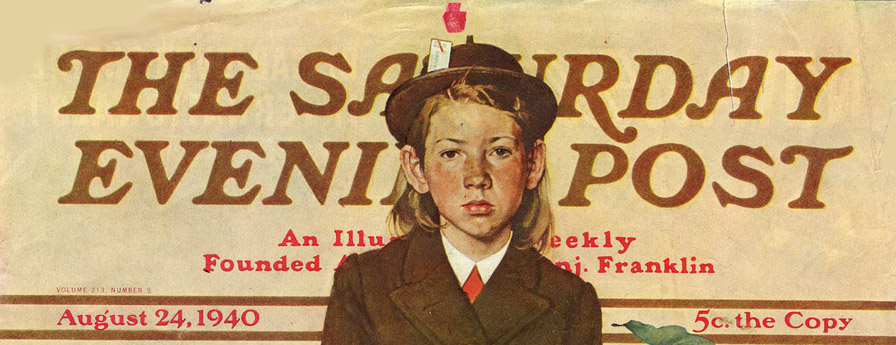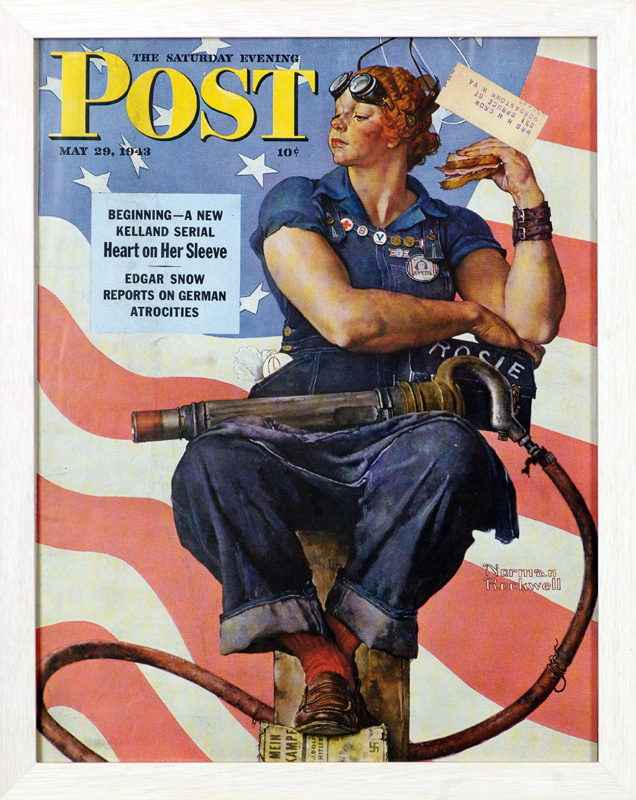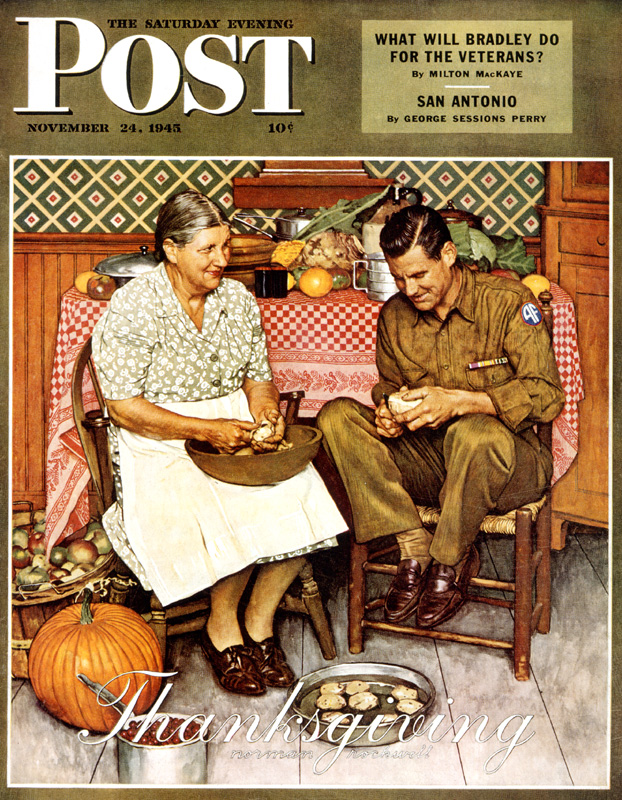Norman Rockwell’s 323 Saturday Evening Post Covers
Without thinking too much about it in specific terms, I was showing the America I knew and observed to others who might not have noticed. And perhaps, therefore, this is one function of the illustrator. He can show what has become so familiar that it is no longer noticed. The illustrator thus becomes a chronicler of his time.—Norman Rockwell

. ©1940 SEPS: Curtis Publishing, Indianapolis, IN.
An exhibition organized by the Norman Rockwell Museum
In the minds of many people, The Saturday Evening Post and Norman Rockwell are synonymous. Americans, who lived through the rapid growth and change of the twentieth century, view the Rockwell covers as an identifiable and comfortable image of their life in the United States.
At the start of his career, Norman Rockwell’s secret ambition was to have his work published on the cover of The Saturday Evening Post. He viewed the Post as the greatest show window in America for an illustrator. Rockwell’s career with the Post lasted 47 years.
Right from the beginning, I always strived to capture everything I saw as completely as possible.
Norman Rockwell
Born in New York City in 1894, Norman Rockwell always wanted to be an artist. At age 14, Rockwell enrolled in art classes at The New York School of Art (formerly The Chase School of Art). Two years later, in 1910, he left high school to study art at The National Academy of Design. He soon transferred to The Art Students League, where he studied with Thomas Fogarty and George Bridgman. Fogarty’s instruction in illustration prepared Rockwell for his first commercial commissions. From Bridgman, Rockwell learned the technical skills on which he relied throughout his long career.
Rockwell found success early. In 1916, the 22-year-old Rockwell painted his first cover for The Saturday Evening Post, the magazine considered by Rockwell to be the “greatest show window in America.” Over the next 47 years, another 321 Rockwell covers would appear on the cover of the Post.
In 1943, inspired by President Franklin Roosevelt’s address to Congress, Rockwell painted the Four Freedoms paintings. They were reproduced in four consecutive issues of The Saturday Evening Post with essays by contemporary writers. Rockwell’s interpretations of Freedom of Speech, Freedom to Worship, Freedom from Want, and Freedom from Fear proved to be enormously popular. The works toured the United States in an exhibition that was jointly sponsored by the Post and the U.S. Treasury Department and, through the sale of war bonds, raised more than $130 million for the war effort.
In 1963 Rockwell ended his 47-year association with The Saturday Evening Post.
The commonplaces of America are to me the richest subjects in art. Boys battling flies on vacant lots; little girls playing jacks on the front steps; old men plodding home at twilight―all these things arouse feeling in me.
The view of life I communicate in my pictures excludes the sordid and ugly. I paint life as I would like it to be.
Events
There are no events for this exhibition at the Norman Rockwell Museum at this time.
Media
There is currently no media for this exhibition at this time.
Press
There is currently no press for this exhibition at this time.
Venues Hosting This Exhibition
2017-Forward “Available for Travel”
Host this Exhibition
Contact Information:
| Complete Facts | |
|---|---|
| Contents: | Approximately 175original artworks; photographs; artifacts/personal memorabilia; video interview; monograph brochure; introductory and informational panels; and object/extended identification labels. Security: High, all works must be within sight of a trained security officer/staff member at all times during public hours. |
| Security: | High, all works must be within sight of a trained security officer/staff member at all times during public hours. |
| Environment: | Light level -18 to 22 foot candles for paintings and 5 to 7 foot candles for works on paper and other light restricted objects. Humidity -50% plus or minus 5% and temperature 68 – 72 degrees, no direct sunlight and no direct contact with light fixtures or heating, air conditioning, ventilation, or electrical outlets. |
| Space Requirements: | approx. 3000-4000 square feet |
| Shipping: | Air ride, Climate controlled |




















